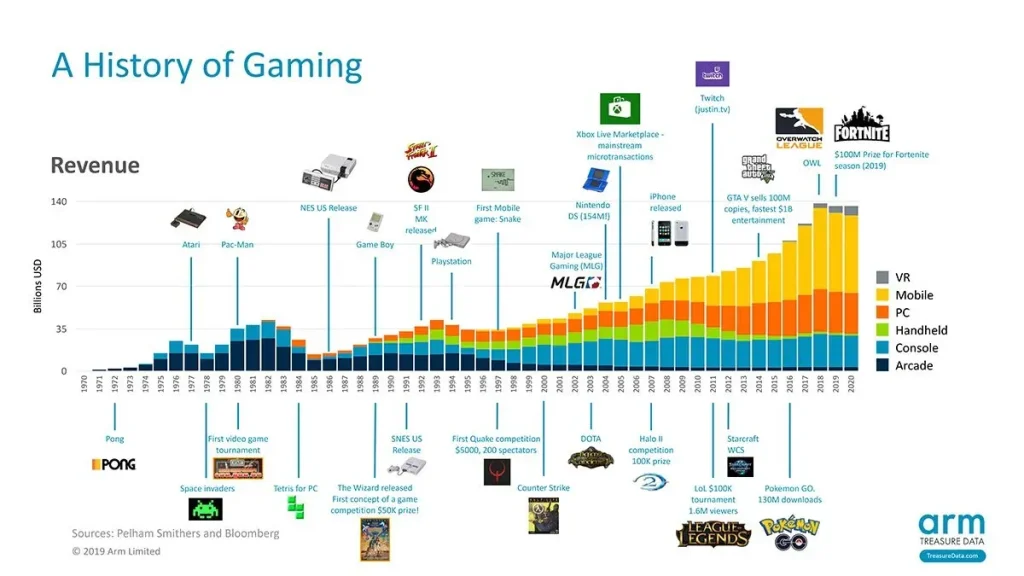Gaming trends are reshaping who can join the fun, where play happens, and how players experience interactive worlds, signaling a shift toward more inclusive, connected, and personalized gaming for everyone. Cloud gaming is removing hardware barriers by shifting the heavy lifting to data centers and edge networks, enabling ambitious titles to run smoothly on modest devices, while opening new monetization models and rapid, device-agnostic updates. AI in gaming is evolving from a helpful feature to a strategic design partner, powering dynamic NPCs, adaptive storytelling, and intelligent companions that tailor challenges to your preferences and pace of play. Cross-platform play is turning multiplayer into a truly shared arena, supported by cloud saves and unified accounts, so friends can squad up across consoles, PC, and mobile without friction, while social features deepen communities. As these currents converge, developers, publishers, and players alike will demand greater accessibility, performance, and immersive realism, all underpinned by ethical design, privacy safeguards, and sustainable practices that sustain long-term engagement.
Gaming Trends You Can’t Ignore: Cloud Gaming, AI in Gaming, and Immersive VR/AR
Cloud gaming is democratizing access to high-fidelity experiences. By shifting the heavy lifting to data centers and edge servers, players can enjoy demanding titles on devices with modest hardware. Latency reductions, higher bandwidth, and advanced compression are narrowing the gap between streaming and local play, making our sessions more portable and longer on smartphones, tablets, and thin laptops. For developers, cloud infrastructure unlocks new monetization strategies—subscription bundles, cloud saves, and instant game switching across devices—embodying a shift in Gaming Trends toward flexibility and reach over raw hardware specs.
AI in gaming is moving from a behind-the-scenes helper to a core design tool. Dynamic NPCs, adaptive storytelling, and intelligent companions learn and respond to your preferences, delivering personalized adventures. For developers, AI accelerates content generation, balancing, testing, and anti-cheat measures, shortening production cycles and supporting ambitious worlds. The combination of cloud capability and AI-enabled tooling also improves accessibility—AI-driven narration and captioning can make games more inclusive for players with diverse needs. As VR and AR gaming mature, AI-assisted pacing and dynamic content adaptation can extend immersion into physical spaces.
Mobile Gaming Trends and Cross-Platform Play: Driving Accessibility and Engagement
Mobile gaming trends are redefining where and how players engage. With smarter devices, 5G connectivity, and increasingly capable on-device AI, handheld titles now offer depth once reserved for consoles. The shift is accelerating cross-device journeys—start a session on a phone, continue on a tablet or PC, and rely on cloud or local saves to keep progress intact. This convergence expands the potential audience and keeps players connected across contexts.
Social features, creator tools, and adaptive interfaces amplify inclusivity on mobile. Lightweight experiences can still deliver large-scale online play and esports on the go, thanks to cloud streaming bridges and responsive UI. As part of cross-platform play, players can join friends across devices, while robust accessibility options and privacy controls help broaden the audience without compromising safety.
Frequently Asked Questions
How will cloud gaming and streaming reshape accessibility and cross-platform play in the next decade?
Cloud gaming and streaming remove hardware barriers by running games in data centers and edge servers, letting players use modest devices while enjoying demanding titles. As latency improves and bandwidth widens, experiences feel closer to local play, enabling longer sessions on phones, tablets, and lightweight laptops. This shift supports cross-platform play and cloud saves, while new monetization models like subscriptions make multi-device gaming more seamless.
What role will AI in gaming play in shaping player experiences and development in the coming years?
AI in gaming is moving from a supporting role to a core design tool and player experience enhancer: adaptive NPCs, reactive storytelling, and smarter companions tailor adventures to individual playstyles. For developers, AI accelerates content generation, testing, balancing, and anti-cheat measures, shortening production cycles and enabling more ambitious worlds. AI also enhances accessibility through narration and captions, supporting more inclusive gameplay while expanding the potential for dynamic, personalized experiences.
| Trend | Focus | Key Points |
|---|---|---|
| Trend 1: Cloud Gaming and Streaming | Delivery and accessibility | Play demanding titles on modest devices; heavy lifting in data centers/edge; latency gains; cross-device play; new monetization (subscriptions, cloud saves). |
| Trend 2: AI in Gaming | AI as core design/tool | Personalized adventures; adaptive NPCs and storytelling; AI-assisted content creation, testing, and anti-cheat; accessibility through narration/captioning. |
| Trend 3: VR and AR Take Stock | Immersive VR/AR integration | Standalone VR becomes lighter/cheaper; AR blends digital with real world; cross-media experiences and hybrid gameplay; spatial/social immersion. |
| Trend 4: Mobile Gaming Reaches New Heights | Mobile-first growth & on-device AI | Smarter devices and networks enable deeper experiences; mobile esports; cross-device progress; hybrid play between phone/tablet/PC. |
| Trend 5: Cross-Platform Play and Social Features | Cross-platform ecosystems & social features | Cross-progression/cloud saves/cross-buy; social hubs and shared tools; reduced device friction; broader multiplayer reach. |
| Trend 6: Esports and Streaming Culture Accelerates | Creator economy & spectator integration | Real-time polls, coach-cam overlays, spectator modes; new paths to pro play; scalable spectator experiences for developers. |
| Trend 7: Accessibility and Inclusive Design Becomes Standard | Inclusive design as a baseline | Color-adjusted palettes, scalable UI, adaptive controls, narration; broader audience and improved brand perception; validation with diverse testers. |
| Trend 8: Hardware Innovation and Infrastructure Improve the Pulse of Gaming | Advancing hardware & infrastructure | New GPUs/CPUs/memory; edge computing reducing latency; faster networks; advanced haptics/audio; scalable tooling for teams. |
| Trend 9: Content Creation, Modding, and Generative Tools Expand the Arena | UGC & tooling empowerment | Mods, editors, generative AI; quicker prototyping and publishing; marketplaces and creator-driven monetization; diverse communities. |
| Trend 10: Ethics, Sustainability, and Privacy in a Connected Era | Privacy, sustainability & responsible monetization | Transparent policies, data protections, energy-conscious design, and regulatory alignment; balanced innovation with accountability. |

